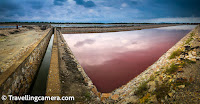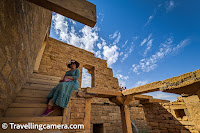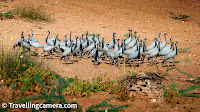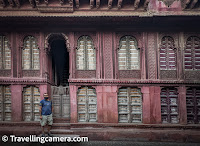Moosi Rani ki Chhatri, located in Alwar, Rajasthan, is a stunning example of Rajput architecture and an important historical monument dedicated to the royal family of Alwar. Built in the memory of Maharaja Bakhtawar Singh and his queen, Rani Moosi, this cenotaph stands as a symbol of love, devotion, and the architectural brilliance of the 19th century. The chhatri (cenotaph) is not just a place of royal commemoration but also an architectural gem that draws visitors for its intricate designs, historical significance, and picturesque setting.
Historical Background
Moosi Rani ki Chhatri was built in 1815 by Maharaja Vinay Singh to honor his predecessor, Maharaja Bakhtawar Singh, and his beloved queen, Rani Moosi, who performed sati (a traditional act of self-immolation on her husband’s funeral pyre). The cenotaph was constructed to immortalize the queen’s ultimate sacrifice and devotion to her husband, a practice that was considered highly honorable in Rajput traditions. Over the years, the chhatri has come to symbolize the cultural and historical legacy of the Alwar royal family.
Architectural Design
Moosi Rani ki Chhatri is a spectacular blend of Rajput and Mughal architectural styles, known for its detailed carvings, frescoes, and elegant structural design. The cenotaph is a two-story structure made of red sandstone and white marble, standing on a raised platform with intricate detailing that reflects the artistry of Rajasthani craftsmen.
Key Architectural Features:
Double-Storeyed Structure: The lower floor of the cenotaph is constructed with red sandstone, giving it a solid and earthy look, while the upper floor is made from white marble, symbolizing purity and devotion. This dual-tone construction highlights the contrast and harmony between the two architectural styles.
Intricately Carved Pillars and Arches: The cenotaph features beautifully carved pillars and arches that showcase traditional Rajasthani motifs and patterns. These designs include floral patterns, geometric shapes, and mythological figures, all of which add to the chhatri's grandeur.
Domed Pavilion (Chhatri): The main structure is crowned with a domed pavilion, which is a hallmark of Rajput architecture. The dome is adorned with detailed carvings and artistic embellishments that reflect the influence of Mughal design elements.
Frescoes and Paintings: The interiors of Moosi Rani ki Chhatri are decorated with stunning frescoes that depict scenes from Hindu mythology and Rajput history. These paintings are vivid representations of the gods and goddesses, royal processions, and traditional folk tales, making the interiors as captivating as the exterior.
Carvings of Elephants and Peacocks: The cenotaph is also adorned with intricate carvings of elephants and peacocks, symbolizing strength and beauty, respectively. These motifs are commonly found in Rajasthani art and highlight the connection between the royal family and their cultural heritage.
Significance and Symbolism
Moosi Rani ki Chhatri is more than just a royal cenotaph; it is a representation of Rajput valor, devotion, and architectural splendor. The memorial was built to honor not only the life and reign of Maharaja Bakhtawar Singh but also to immortalize Rani Moosi's act of loyalty and sacrifice. This monument stands as a tribute to the Rajput traditions and their deep-rooted values of courage and devotion.
Setting and Ambiance
The cenotaph is located on the banks of Sagar Lake, which adds to its serene and tranquil ambiance. The reflection of the chhatri in the lake’s water, especially during sunrise and sunset, creates a picturesque scene that enhances the beauty of the monument. The surrounding gardens and well-maintained lawns provide a peaceful environment, making it a perfect spot for visitors to relax and appreciate the historical significance of the site.
Best Time to Visit Moosi Rani ki Chhatri
The best time to visit Moosi Rani ki Chhatri is during the winter months (October to March), when the weather is pleasant and ideal for outdoor exploration. The cool climate during these months makes it easier to explore the cenotaph and enjoy the scenic beauty of the surrounding area without the discomfort of the scorching summer heat.
How to Reach Moosi Rani ki Chhatri
By Road: Alwar is well-connected by road to major cities like Jaipur, Delhi, and Agra. You can easily reach Moosi Rani ki Chhatri by hiring a taxi or taking a local bus from Alwar city.
By Train: The nearest railway station is Alwar Junction, which has regular train services connecting it to major cities in Rajasthan and nearby states.
By Air: The closest airport is Jaipur International Airport, located about 150 kilometers from Alwar. From the airport, you can hire a cab or take a bus to reach Alwar.
Nearby Attractions
When visiting Moosi Rani ki Chhatri, you can also explore other nearby attractions in Alwar:
Alwar City Palace (Vinay Vilas Mahal): Located close to the cenotaph, the City Palace is a stunning example of Rajput and Mughal architecture with an impressive collection of artifacts.
Sariska Tiger Reserve: One of India's most famous wildlife reserves, known for its tiger population and rich biodiversity, located about 35 kilometers from Alwar.
Bala Quila (Alwar Fort): A historical fort situated on the Aravalli hills, offering panoramic views of the Alwar cityscape.
Moosi Rani ki Chhatri is not just a cenotaph but a beautiful representation of Rajasthan’s architectural legacy and royal traditions. Its intricate design, historical significance, and serene setting make it a must-visit destination for anyone exploring the rich cultural heritage of Alwar. Whether you are a history enthusiast, an architecture lover, or a traveler seeking to experience Rajasthan's royal past, a visit to Moosi Rani ki Chhatri promises an enchanting journey into the heart of Rajput history and artistry.
Related Blogposts:
 Amber Fort in Rajasthan : The Pearl of Jaipur's Rajput Architecture
Amber Fort in Rajasthan : The Pearl of Jaipur's Rajput Architecture
 Chand Baori in Abhaneri: A Marvel of Ancient Indian Architecture in Rajasthan
Chand Baori in Abhaneri: A Marvel of Ancient Indian Architecture in Rajasthan
 Bhandarej Baori: An Ancient Stepwell of Rajasthan's Heritage
Bhandarej Baori: An Ancient Stepwell of Rajasthan's Heritage
.jpg) Tour de Churu Streets having grand havelis with marvelous fresco paintings | Haveli Heritage Tour Rajasthan, India
Tour de Churu Streets having grand havelis with marvelous fresco paintings | Haveli Heritage Tour Rajasthan, India
 Beautiful Vyas Chhatris in Jaisalmer, Rajasthan || the most unusual sunset point built in a cremation ground
Beautiful Vyas Chhatris in Jaisalmer, Rajasthan || the most unusual sunset point built in a cremation ground
 Magnificent Cenotaphs at the Bada Bagh, Jaisalmer, Rajasthan || Exorbitant Ticket Prices can be a deterrent to anyone visiting the place
Magnificent Cenotaphs at the Bada Bagh, Jaisalmer, Rajasthan || Exorbitant Ticket Prices can be a deterrent to anyone visiting the place
 An interesting drive from Kuldhara to Khaba Fort, Dedha, Jaisalmer, Rajasthan || The Journey was definitely worth the visit to this beautiful little fort
An interesting drive from Kuldhara to Khaba Fort, Dedha, Jaisalmer, Rajasthan || The Journey was definitely worth the visit to this beautiful little fort
 A half day detour to Sambhar Salt Lake, Rajasthan from NH48 || What makes India's Largest Inland Salt Lake worth visiting in winters?
A half day detour to Sambhar Salt Lake, Rajasthan from NH48 || What makes India's Largest Inland Salt Lake worth visiting in winters?
 A fulfilling stop at Mandore in Jodhpur, Rajasthan || The old seat of the Rathore clan and also the birthplace of Mandodari
A fulfilling stop at Mandore in Jodhpur, Rajasthan || The old seat of the Rathore clan and also the birthplace of Mandodari
 The Golden Fort of Jaisalmer, Rajasthan || A thriving, pulsating mini city within the walls of the fort
The Golden Fort of Jaisalmer, Rajasthan || A thriving, pulsating mini city within the walls of the fort
 The splendid architecture of Patwon ki Haveli in Jaisalmer, Rajasthan || One of the most opulent of the havelis in Jaisalmer
The splendid architecture of Patwon ki Haveli in Jaisalmer, Rajasthan || One of the most opulent of the havelis in Jaisalmer
 The Abandoned Village of Kuldhara near Jaisalmer, Rajasthan || Facts and Fables about why the Paliwal Brahmins abandoned this village of their ancestors
The Abandoned Village of Kuldhara near Jaisalmer, Rajasthan || Facts and Fables about why the Paliwal Brahmins abandoned this village of their ancestors
 The Amazing Pokaran Fort near Jaisalmer, Rajasthan || A beautiful structure that effortlessly blends with the desert landscape it is built in
The Amazing Pokaran Fort near Jaisalmer, Rajasthan || A beautiful structure that effortlessly blends with the desert landscape it is built in
 Vedi Temple inside KumbalGarh Fort, Rajasthan - 3 Storey Octagonal structure standing strong on 36 pillars around world's second largest wall
Vedi Temple inside KumbalGarh Fort, Rajasthan - 3 Storey Octagonal structure standing strong on 36 pillars around world's second largest wall







.jpg)
















.jpg)

.jpg)
Comments